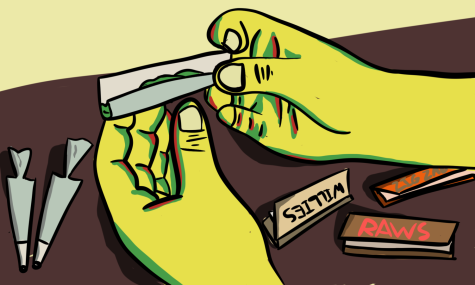Biological warfare has put many soldiers at risk, which is why the Defense Threat Reduction Agency, a subset of the Department of Defense, has distributed $13.5 million to a CSU research collaboration to develop antibiotics.
Dr. Richard Slayden, an associate professor in the Microbiology, Immunology, and Pathology department, and his colleagues will work on this grant for 3.5 years in order to develop antibiotics to be used against biological attacks on the front lines.
Ad
The grant is a collaboration between CSU, University of California-Berkeley, and Anacore pharmaceutical company to develop antibiotics to be used in the battlefield.
Slayden explains that biological agents used in warfare can be naturally more resistant to treatment, or intentionally manipulated to be more harmful.
“People in the military are susceptible because of intentional release — (these agents) could be used in a weaponized form,” Slayden said. “They’re usually selected because they’ve got high mortality and infectivity rates.”
The hope is that this collaboration will help set a precedent for drug development in the general public, but for now the most pressing need is in the military.
“The military application is important because that’s where the dollars are flowing from and thats where the need is,” Slayden said.
CSU is in a unique position to do this research because of its top quality facilities, according to Dr. Susan Knudson, a researcher in Slaydens lab. Knudson explains that the BSL3 –or biosafety level 3 classification– allows the team to work with highly pathogenic agents.
“If we didn’t have a BSL3, there wouldn’t be a collaboration,” Knudson said.
Jason Cummings, a research associate in Slaydens lab, said that the combination of CSU’s facilities and the experience of Dr. Slayden’s team allows them to be a desirable part of this multi-million dollar collaboration.
“There aren’t a lot of facilities in the US that are able to do this kind of work,” Cummings said. “There’s a lot of tools at our disposal, and we’ve used a lot of those tools in the past to get the whole picture, and I think that puts us above and beyond what other groups have available to them.”
Ad
In order to develop an antibiotic, Slayden’s lab is testing molecules that inhibit the bacterial ribosome, the place where cellular information is translated into protein.
Cummings explains that if you allow protein synthesis to continue, the bacteria can adapt to antibiotics, so that may not be the most effective method of stopping their infectivity.
“Once you shut down protein synthesis, you essentially shut down any chance of survival for that bacteria,” Cummings said.
This collaboration is unique, according to Slayden, because it allows promising molecules to be tested in the clinic more quickly — university research usually stops when the drug target has been identified or the molecule developed.
“The only way that gets moved along is because of partnership with these companies,” Slayden said.
Slayden adds that this drug design pipeline can also be used as a model to develop drugs quickly for hard to treat pathogens that the general public is exposed to.
“Hopefully it’s a model that we can build on, it’ll open up opportunities for other people,” Slayden said.
Knudson sees more and more companies doing away with their research and development programs in favor of university collaboration. This CSU collaboration seems to be where the pharmaceutical industry is heading in the future.
Slayden’s team has to meet certain progress goals throughout the life of the grant, or they do not get the full funding amount. Despite this, the team remains optimistic.
“To be able to move these drugs through that could really help soldiers in the battlefield — that’s the ultimate goal. On that line it’s really exciting and we’re really looking forward to getting started,” Cummings said.
Collegian Science Beat Reporter Remi Boudreau can be reached at news@collegian.com.







